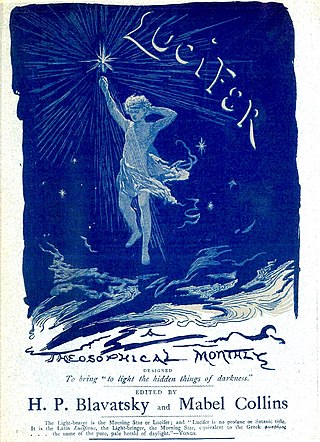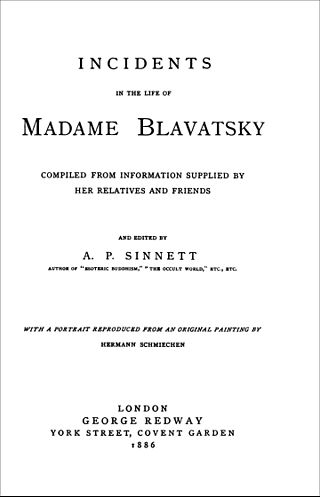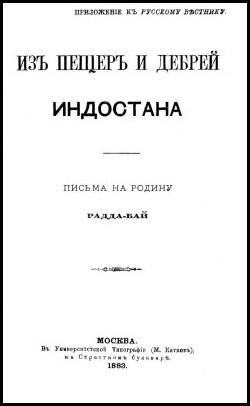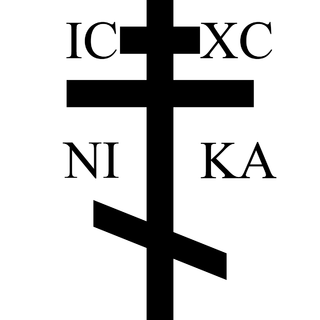
Helena Petrovna Blavatsky, often known as Madame Blavatsky, was a Russian mystic and author who co-founded the Theosophical Society in 1875. She gained an international following as the leading theoretician of Theosophy.

Charles Webster Leadbeater was a member of the Theosophical Society, Co-Freemasonry, an author on occult subjects, and the co-initiator, with J. I. Wedgwood, of the Liberal Catholic Church.

Alice Ann Bailey was a writer of more than twenty-four books on theosophical subjects, and was one of the first writers to use the term New Age. Bailey was born as Alice La Trobe-Bateman, in Manchester, England. She moved to the United States in 1907, where she spent most of her life as a writer and teacher.
Djwal Khul, is believed by some Theosophists and others to be a Tibetan disciple in "The Ageless Wisdom" esoteric tradition. The texts describe him as a member of the 'Spiritual Hierarchy', or 'Brotherhood', of Mahatmas, one of the Masters of the Ancient Wisdom, defined as the spiritual guides of mankind and teachers of ancient cosmological, metaphysical, and esoteric principles that form the origin of all the world's great philosophies, mythologies and spiritual traditions. According to Theosophical writings, Djwal Khul is said to work on furthering the spiritual evolution of our planet through the teachings offered in the 24 books by Alice Bailey of Esoteric Teachings published by The Lucis Trust ; he is said to have telepathically transmitted the teachings to Bailey and is thus regarded by her followers as the communications director of the Masters of the Ancient Wisdom.

Lucifer was a journal published by Helena Blavatsky. The first edition was issued in September 1887 in London. The journal published articles on philosophical, theosophical, scientific and religious topics. It also contained book reviews, for example of Friedrich Nietzsche's Thus Spoke Zarathustra.

Eduard (Édouard) Schuré was a French philosopher, poet, playwright, novelist, music critic, and publicist of esoteric literature.

Alvin Boyd Kuhn was an American Theosophist, lecturer, and self-published author. He was a proponent of the Christ myth theory.

Constance Georgina Louise Wachtmeister, known as Countess Wachtmeister, was a prominent theosophist, a close friend of Helena Blavatsky.

Man: Whence, How and Whither, A Record of Clairvoyant Investigation, published in 1913, is a theosophical book compiled by the second president of the Theosophical Society (TS) - Adyar, Annie Besant, and by a TS member, Charles W. Leadbeater. The book is a study on early times on planetary chains, beginnings of early root races, early civilizations and empires, and past lives of men.

"Is Theosophy a Religion?" is an editorial published in November 1888 in the theosophical magazine Lucifer; it was compiled by Helena Blavatsky. It was included in the 10th volume of the author's Collected Writings. According to Arnold Kalnitsky, in the article it is about the problems of religion from the Theosophical point of view.

Theosophy is a religion established in the United States during the late 19th century. It was founded primarily by the Russian Helena Blavatsky and draws its teachings predominantly from Blavatsky's writings. Categorized by scholars of religion as both a new religious movement and as part of the occultist stream of Western esotericism, it draws upon both older European philosophies such as Neoplatonism and Asian religions such as Hinduism and Buddhism.

Incidents in the Life of Madame Blavatsky: compiled from information supplied by her relatives and friends is a book originally published in 1886 in London; it was compiled by a member of the Theosophical Society, A. P. Sinnett, who was the first biographer of H. P. Blavatsky. Sinnett describes the many unusual incidents in Blavatsky's life beginning from her childhood in Russia, and asserts that Blavatsky had "an early connection with the supernatural world;" Sinnett also writes about Blavatksy's short, unlucky marriage and "decade of extensive global travels," about her period of learning in Tibet, and the "criticism she received about some of her 'phenomena' and practices."

From the Caves and Jungles of Hindostan: Letters to the Homeland is a literary work by the founder of the Theosophical Society Helena Blavatsky. She published it under the pen name Radda Bai in serial installments (letters) from 1879 to 1886 in Moscow in the periodicals Moskovskiya Vedomosti and Russkiy Vestnik, edited by Mikhail Katkov. The first part of these letters was published in a single volume in 1883 as an appendix to the journal Russkiy Vestnik. The second part of the letters was published in 1884–1886. The series obviously was never finished as it broke off rather suddenly.

Christianity and Theosophy, for more than a hundred years, have had a "complex and sometimes troubled" relationship. The Christian faith was the native religion of the great majority of Western Theosophists, but many came to Theosophy through a process of opposition to Christianity. According to professor Robert S. Ellwood, "the whole matter has been a divisive issue within Theosophy."

"What Are The Theosophists?" is an editorial published in October 1879 in the theosophical magazine The Theosophist. It was compiled by Helena Blavatsky and it was included the second volume of the Blavatsky Collected Writings.

Modern Theosophy is classified by prominent representatives of Western philosophy as a "pantheistic philosophical-religious system." Russian philosopher Vladimir Trefilov claimed that Blavatsky's doctrine was formed from the beginning as a synthesis of philosophical views and religious forms of the various ages and peoples with modern scientific ideas. Michael Wakoff, an author of The Routledge Encyclopedia of Philosophy, stated that Blavatskian Theosophy was based on Buddhist and Hindu philosophy, and fragments of the Western esotericism with using an "absolutist metaphysics." In The New Encyclopedia of Philosophy it is said that Blavatsky's Theosophy is an attempt to merge into a universal doctrine all religions by revealing their "common deep essence" and detection of "identity meanings of symbols," all philosophies, and all sciences.

"What Is Theosophy?" is an editorial published in October 1879 in the Theosophical magazine The Theosophist. It was compiled by Helena Blavatsky and included into the 2nd volume of the Blavatsky Collected Writings. According to a doctoral thesis by Tim Rudbøg, in this "important" article Blavatsky "began conceptualizing her idea of 'Theosophy'."

Hinduism is regarded by modern Theosophy as one of the main sources of "esoteric wisdom" of the East. The Theosophical Society was created in a hope that Asian philosophical-religious ideas "could be integrated into a grand religious synthesis." Prof. Antoine Faivre wrote that "by its content and its inspiration" the Theosophical Society is greatly dependent on Eastern traditions, "especially Hindu; in this, it well reflects the cultural climate in which it was born." A Russian Indologist Alexander Senkevich noted that the concept of Helena Blavatsky's Theosophy was based on Hinduism. According to Encyclopedia of Hinduism, "Theosophy is basically a Western esoteric teaching, but it resonated with Hinduism at a variety of points."
According to some literary and religious studies scholars, modern Theosophy had a certain influence on contemporary literature, particularly in forms of genre fiction such as fantasy and science fiction. Researchers claim that Theosophy has significantly influenced the Irish literary renaissance of the late 19th and early 20th centuries, notably in such figures as W. B. Yeats and G. W. Russell.

Modern Theosophy has had considerable influence on the work of visual artists, particularly painters. Artists such as Wassily Kandinsky, Piet Mondrian, and Luigi Russolo chose Theosophy as the main ideological and philosophical basis of their work.
















